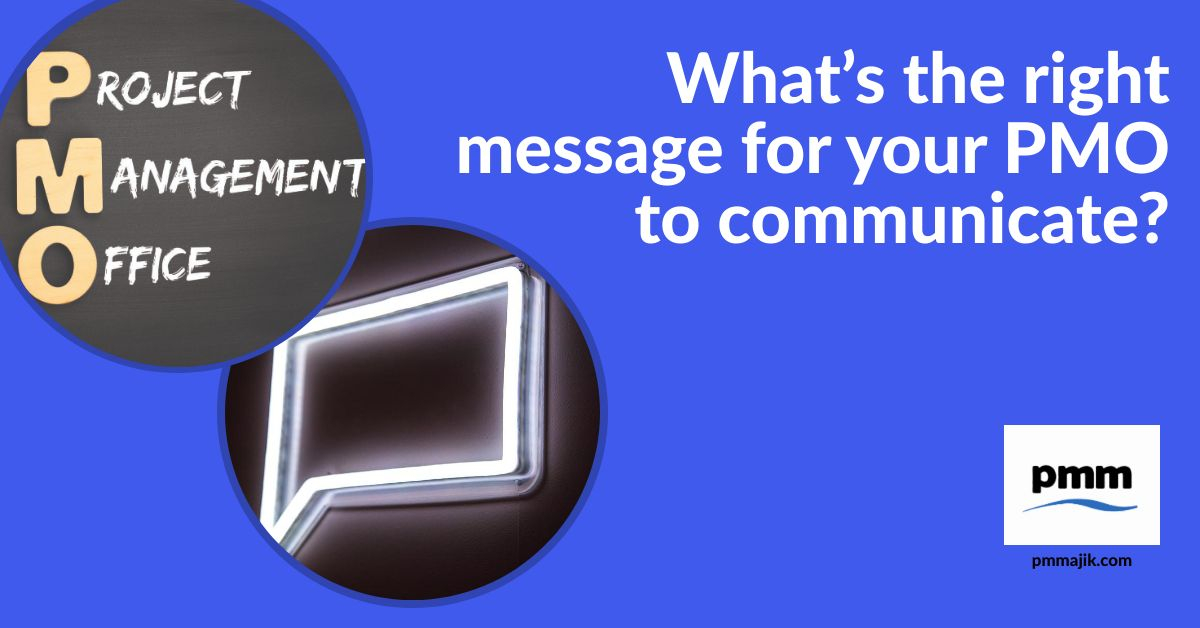When you’re intent on raising awareness of your project management office, you need to thoroughly understand what the right message is for your PMO to communicate. What is it you want people to know about your PMO?
There are different people you communicate with when raising awareness of your PMO. Not everyone needs to know the same thing about your office and its work so you need to target your messaging.
We’ll be covering:
- What the people in your organisation want to know about your PMO
- The message you need to be communicating to your leaders
- How to target a message at your stakeholders
We’ve already covered, why you need to be raising awareness of your PMO, now let’s get into what you need to be saying.
What’s the right message to tell the people in the business about my PMO?
Letting all the employees in your company know what your PMO does can help you in lots of ways. You’ll attract better talent and find project rollouts in the business much easier, for example.
To reap these benefits, you need to be telling your business-wide colleagues about the things you do to make their lives easier. Profit margins and strategy are likely not so important to them.
The function your office completes is what the business needs to know. Making infographics and process maps about the tools your PMO has created will show the value you add to everyone’s working day.
Everyone wants their life to be made easier. When one of your projects or tools does that across the business, be sure to make sure everyone knows about it. Use illustrations with your PMO branding and use social media to communicate these achievements.
What should I be telling the leaders about my PMO?
The leaders in your business will be a much smaller audience. They have much more interest in what your PMO does for the business and how your PMO furthers its goals.
Some messages you can give to raise awareness of your PMO to your leaders include:
- Achieving business objectives – this could be decreasing costs with projects, increasing efficiencies, or adding to the bottom line of the business. Tell the leaders how your PMO actions align with business goals.
- Data and analysis – your PMO produces a lot of business intelligence. Be sure to offer data visualisations to your leaders to enable them to make data-led decisions.
- Project overviews – a PMO collects information about all the business projects, meaning you can offer insight into a large section of the business. Providing an overview of the business area makes their monitoring of the business much easier.
What do I tell stakeholders about my PMO to raise awareness?
Stakeholders can be either internal business areas awaiting a project to be delivered, or customers of the business who will benefit from the project. These aren’t the type of people who want to know about how slick your processes are; they’re focussed on the end result.
Realising project value
Tell the people affect by the projects under your office how the outcomes will be of value to them. Will they get a better service? Are products going to be cheaper? Create videos or use social media to pass on these messages.
Driving project success
Current and potential clients want to know how you can make a project a success. Blogs about your recent achievements with case studies will appeal to people considering giving your company a project to work on.
Facilitating project development
Let people know how the involvement of your PMO will change the project for the better. Showing that you can take a simple idea and build a project with positive outcomes is an effective message to deliver.
The take home
Once you understand how important it is to raise awareness of your PMO, you need to ask “what’s the right message for your PMO to communicate?” You need to define who it is you want to know about your PMO before you can choose a message and a method. Whilst other employees across the business will want to know what your PMO can do for them, the leadership will want to know about the value that your office adds to the business. Other stakeholders will be concerned with how you can produce results that affect them.
